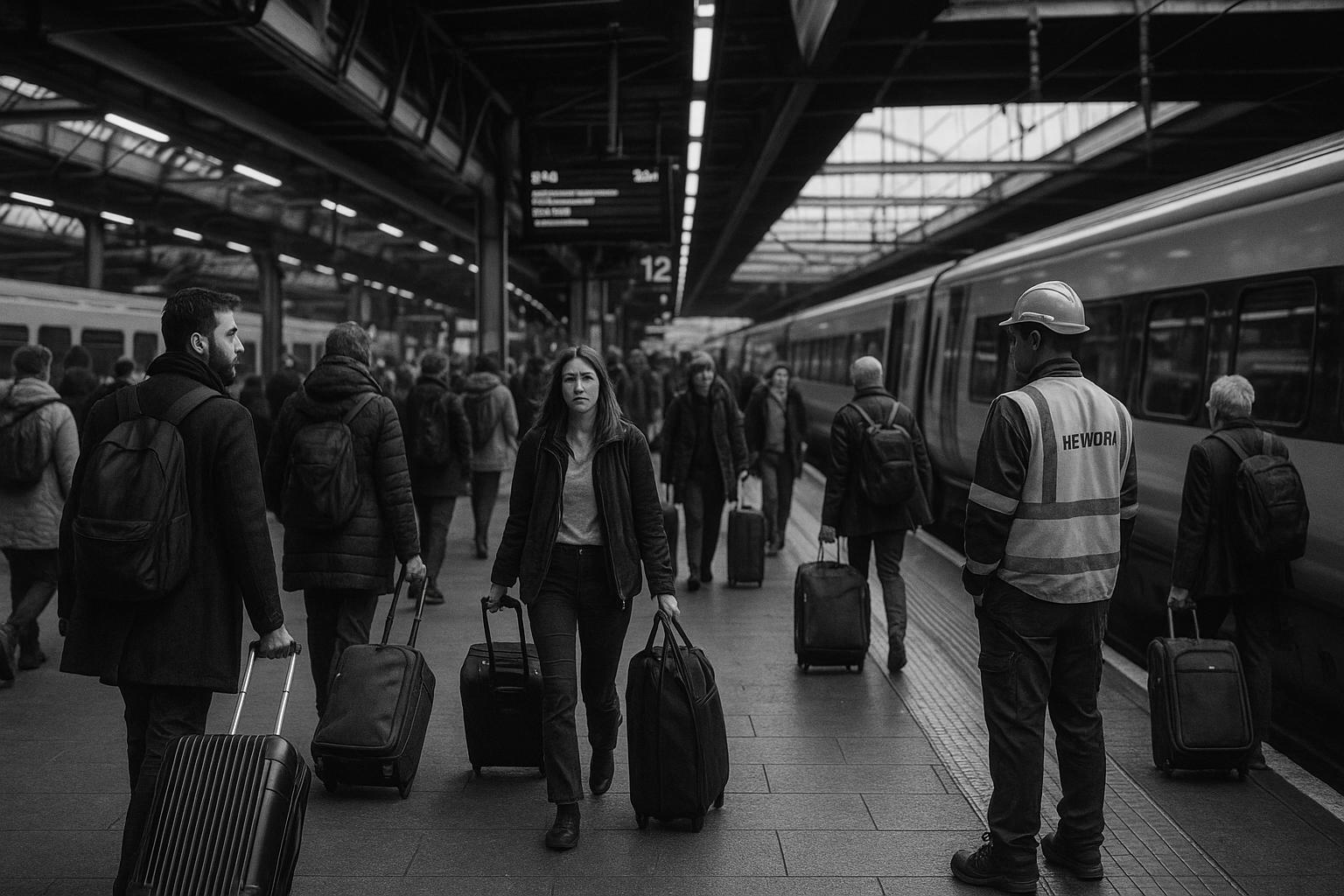From Saturday evening to Monday morning over the recent bank holiday, the southernmost 75 miles of the vital East Coast Main Line, connecting London King’s Cross to Peterborough, lay entirely closed. This disruption, part of an extensive modernisation effort known as the East Coast Digital Programme, ushered passengers into a vastly prolonged journey. A trip that ordinarily takes 47 minutes on a direct intercity train ballooned into a two-and-a-half-hour ordeal via rail replacement buses. The inconvenience was substantial, but Network Rail and transport planners argue it is a necessary sacrifice for a future-proof railway.
The East Coast Digital Programme represents a transformative upgrade from the Victorian-era, largely analogue signalling system, to a state-of-the-art digital system designed to deliver signalling information directly to train drivers. This shift to digital signalling, featuring the European Train Control System (ETCS), is intended to improve reliability, punctuality, and environmental sustainability by enabling trains to operate more efficiently without the fragile lineside equipment that has long been vulnerable to theft and damage—issues exemplified recently when copper cable theft on the West Coast Main Line caused significant disruption.
Government investment underscores the scale of this upgrade. A £1 billion commitment aims not only to enhance safety and efficiency but also to drastically modernise one of the UK’s busiest rail corridors. Recent progress has included commissioning critical sections of the route, such as between Welwyn and Hitchin, facilitating the testing and phased introduction of ETCS signalling expected to be in passenger use by 2025. This digital advance marks the UK’s first mainline digital railway, projected to save thousands of hours in delays, thus bringing the network into the 21st century.
Choosing the timing for such disruptive maintenance work always involves delicate trade-offs. Network Rail optimises for “the least unhappiness of the lowest number,” a philosophical nod to utilitarianism in decision-making. Closing the line during a bank holiday Sunday, rather than over busy commuter weekdays, aims to minimise the impact on daily business travelers and regular users. Although this means some leisure travellers face disruption, the rationale is that many can adjust their plans or accept the delay, whereas weekday closures would paralyse essential economic activity.
However, this strategy is not without controversy. Regular weekend and bank holiday closures risk cementing a public perception that rail travel in the UK is unreliable and inconvenient, potentially discouraging growth in passenger numbers and undermining efforts to reduce the enormous £12.5 billion public subsidy underpinning the network. Some rail enthusiasts and experts suggest that longer, intensive closures—spanning weeks rather than isolated weekends—might better enable comprehensive upgrades and fewer repeated disruptions, provided sufficient advance notice is given for passengers to plan around.
Adding to the turbulence on the railways, strikes by unionized staff at CrossCountry Trains have complicated travel during peak holiday periods. The RMT union, advocating over pay, staffing, and safety, targeted one of the busiest Saturdays in August to press their demands, causing widespread cancellations and closing major routes from Plymouth to Glasgow and Bournemouth to Manchester. Such industrial action starkly contrasts with the disruption caused by planned engineering works but similarly inflicts ‘the greatest unhappiness’ on a significant portion of the travelling public.
Amid these challenges, rare moments of smooth operation bring relief. On the day of the CrossCountry strikes, an unexpected reversal occurred at Birmingham New Street station where trains, not replacement buses, connected to the Birmingham International station—an unforeseen boon for weary travellers. Such instances highlight the unpredictability of rail travel but also hint at the potential improvements digital signalling and infrastructure investment may bring in the future.
The nation’s railways undeniably grapple with ageing infrastructure, high financial subsidies, and industrial relations complexities. Yet the promise of digital upgrades offers a compelling vision: a safer, more reliable, and more efficient network, capable of accommodating rising passenger demand while reducing environmental impact. The path to that future requires both extensive modernisation works and careful negotiation over their timing, balancing disruption today against the system’s long-term vitality.
📌 Reference Map:
- Paragraph 1 – [1], [6]
- Paragraph 2 – [1], [2], [4], [5]
- Paragraph 3 – [1], [3], [7]
- Paragraph 4 – [1]
- Paragraph 5 – [1]
- Paragraph 6 – [1]
- Paragraph 7 – [1]
- Paragraph 8 – [1]
Source: Noah Wire Services
